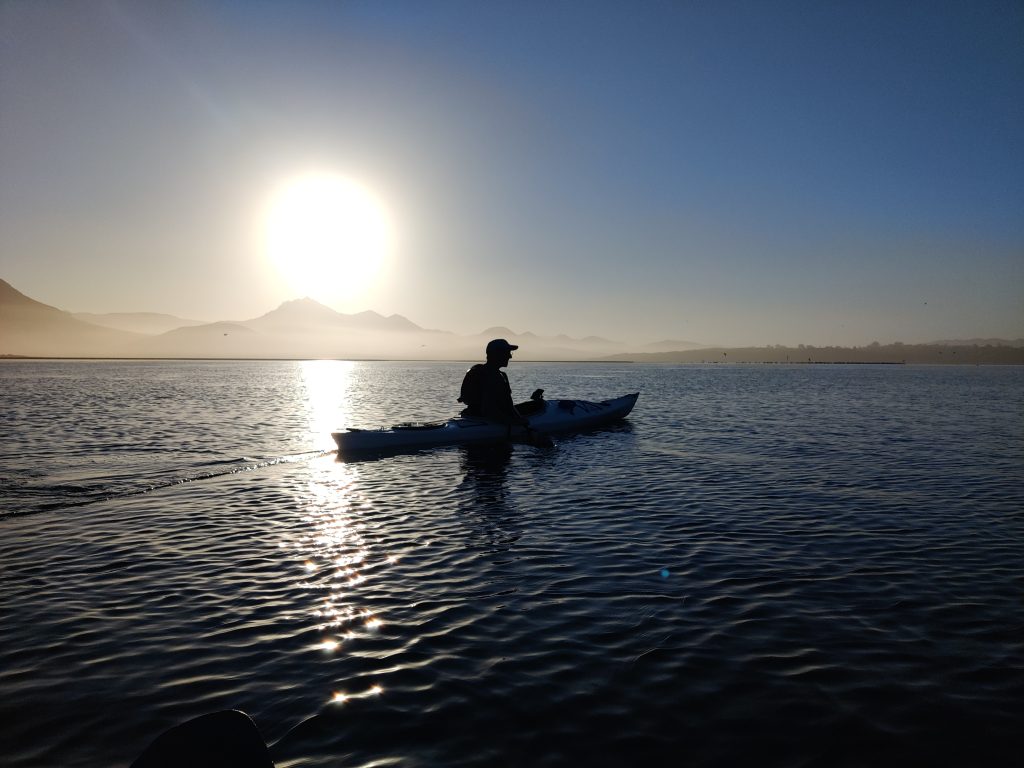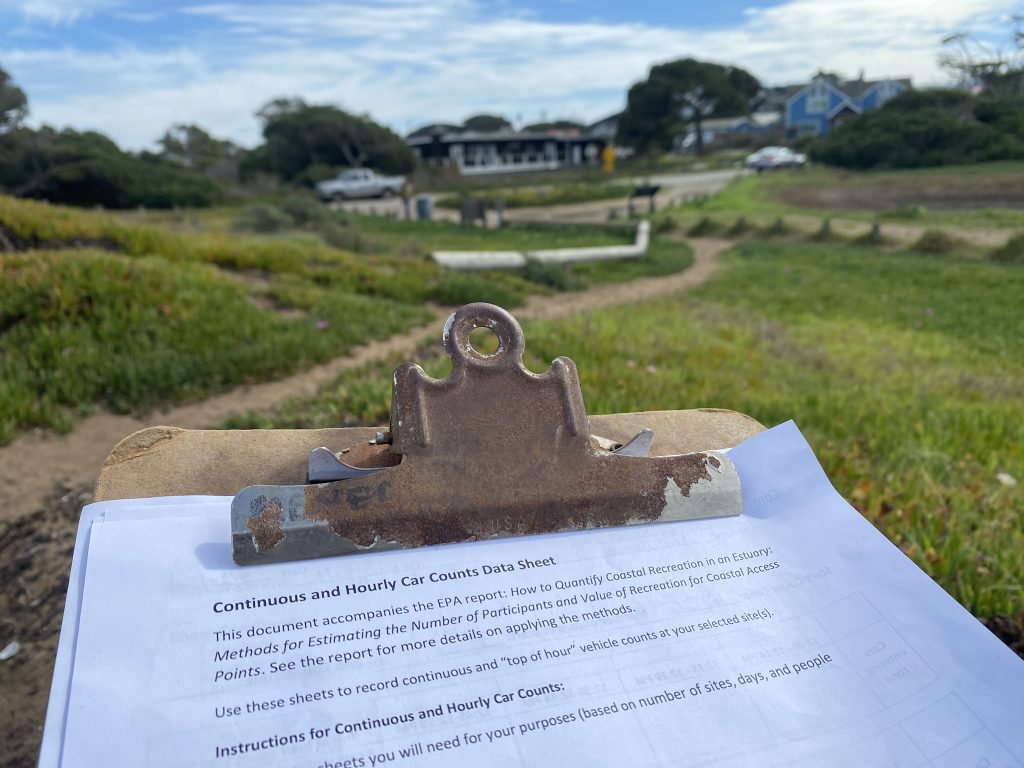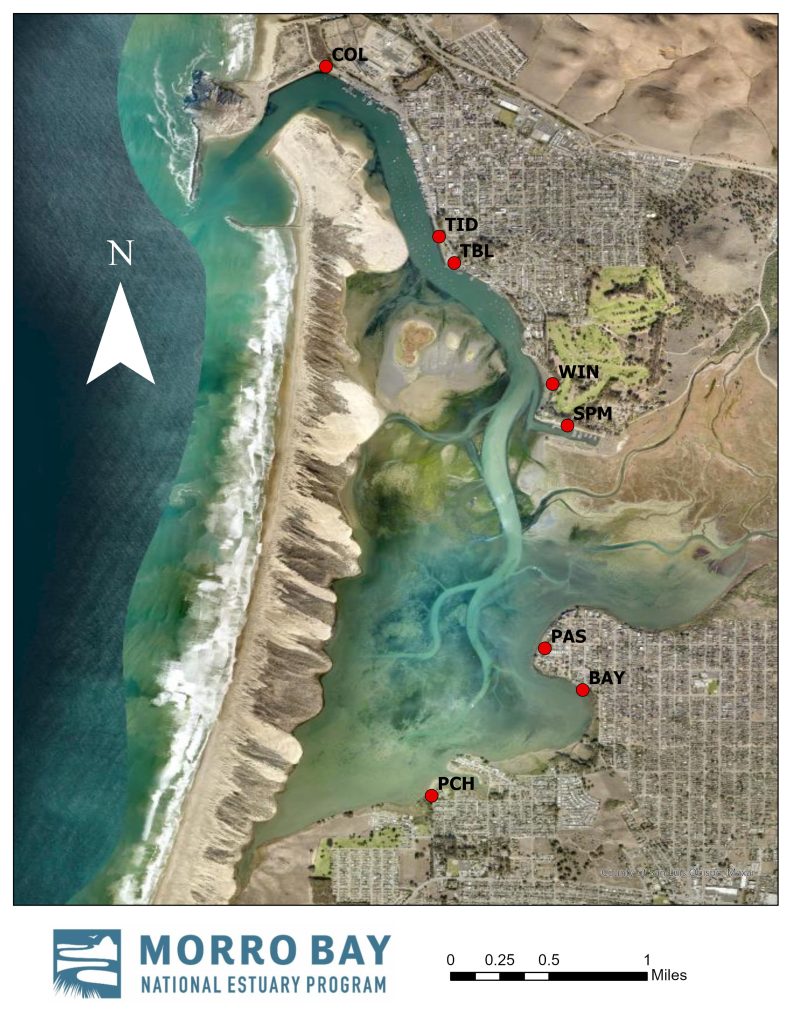Kicking Off a New Project
This February marked the addition of a new research project to the Estuary Program’s monitoring repertoire. Known as Recreational Use Monitoring, the primary goal of this project is to track visitation and recreational activities at popular coastal access sites across the bay. Sites include sandy beaches, boat launches, marinas, and parks, capturing a wide variety of coastal recreation activities that are common in Morro Bay. This project is currently in its early stages, but we are starting to look for additional volunteer support to help with surveys in the coming months. If you are interested in learning more about the project or getting involved, please reach out to our Monitoring team at volunteermorrobaynep@gmail.com.

The Value of Recreation
What did you do the last time you ventured into the estuary for some fun and relaxation? Did you paddle across the channel to enjoy a picnic lunch on the sandspit? Dip your toes in the cool waters at Coleman Beach? Stroll along the Marina Peninsula trail to catch a glimpse of the birds foraging on the tidal marsh? There are numerous activities people engage in while in the estuary. And unless you’re renting equipment or paying for services, many of these activities are free and available to anyone at any time of day.
Even though there may not be a price tag associated with your favorite type of recreation, there is inherent value in having the ability to conduct these activities within a pristine natural setting. This is the concept of non-market value, or the economic benefit stemming from things that aren’t bought or sold in traditional markets but still have intrinsic value to society. Non-market values for coastal recreation have been estimated from peer-reviewed studies and models; however, to apply these estimates to activities within Morro Bay, visitation surveys are needed. These surveys provide information covering the types of recreation taking place and the number of people engaging in those activities. Once that data is collected, the economic value of recreation within the estuary can be better understood.

Tracking Recreational Use Over Time
While it probably seems obvious to most that enjoying our natural resources has value, quantifying this value in monetary terms can have many benefits. A dollar amount converts the more nebulous notion of “value” into an actionable item that is accessible to those who may not engage in coastal recreation themselves. The Recreational Use Monitoring effort is working towards estimating the cumulative value of recreation at eight popular sites along the estuary’s waterfront. This will be accomplished using the methods established by the Environmental Protection Agency (EPA) that use counts of cars and people to estimate visitation (Mulvaney et al. 2020). Along with these counts, surveyors collect water quality data and assess the health of the shoreline (e.g. presence of trash at the site, sulfur smell from excess algae, etc.).

In addition to estimating value, the Estuary Program wants to develop a greater understanding of the relationship between environmental health and visitation. Research has shown that when the beaches and parks along the waterfront are clean, they attract more visitors, and are therefore more valuable, than those that haven’t been well-maintained. This connection between visitation, site quality, and value culminates in the long-term goals of this project: to quantify the importance of maintaining healthy sites, prioritize the restoration of sites that have been degraded, and establish a baseline of estuary use to compare with future surveys.
How Can You Help?
If you are interested in helping collect this valuable data set, the Estuary Program is looking for volunteers to join the project within the next few months. Surveys range from one-hour to four-hour time commitments and can take place on weekday or weekend afternoons on a monthly or bimonthly basis, depending on volunteer availability. Please reach out to volunteermorrobaynep@gmail.com if you’re interested in helping with this project.
Help us protect and restore the Morro Bay estuary!
- Donate to the Estuary Program today and support our work in the field, the lab, and beyond.
The Estuary Program is a 501(c)3 nonprofit. We depend on funding from grants and generous donors to continue our work. - Support us by purchasing estuary-themed gear from ESTERO. This locally owned and operated company donates 20% of proceeds from its Estuary clothing line and 100% of Estuary decal proceeds to the Estuary Program. Thank you, ESTERO!
- Purchase items from the Estuary Program’s store on Zazzle. Zazzle prints and ships your items, and the Estuary Program receives 10% of the proceeds.
- Subscribe to our seasonal newsletter: Between the Tides!
- We want to hear from you! Please take a few minutes to fill out this short survey about what type of events you’d like to see from the Estuary Program. We appreciate your input!